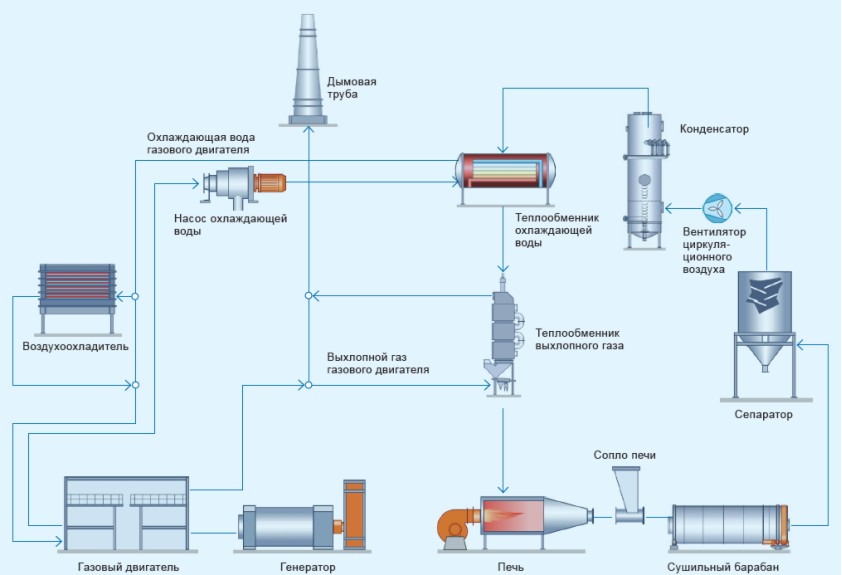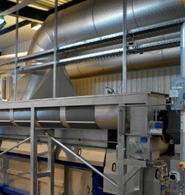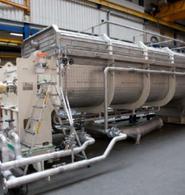Drum dryer
Drum dryers operate according to the scheme with direct flow of sediment and drying agent, which is the flue gas. The drying unit consists of a furnace, a drying chamber and a ventilating device. On the inlet side there is a loading chamber, on the outlet side there is a discharge chamber. The furnace is located at the entrance to the drying chamber. For suction of exhaust gases, a fan is installed. The drum is inclined to the horizon at an angle of 3÷4 °C, is installed on the rollers and has a drive, which performs rotation. The temperature of the flue gases at the dryer inlet is 600-800 °C, at the outlet - 170÷250 °C.
Principle of the drum dryer operation
The sediment is stirred in the drum due to the motion of the flue gases and the rotation of the drum. The drum rotation frequency is 1.5-8 rpm. To distribute the sediment evenly over the section of the drum inside, nozzles (screw, blade or sector) are installed. For grinding and stirring the sludge the additional ship chains are installed at the beginning and at the end of the dryer, freely suspended on the inner surface of the drum.
Drum dryers have a large unit capacity for moisture, which determines their large dimensions, weight and metal consumption.
Advantages of the drum dryers
- low power consumption due to the special design of the drum;
- slight odor during operation due to partial vacuum in the drying system;
- a small amount of exhaust air due to the closed-circuit air circulation;
- long service life.







